- Latest Version 1.128
- Version 1.126
- SAPUI Version 1.124
- SAPUI5 Version 1.122
- SAPUI5 Version 1.120
- SAPUI5 Version 1.118
- SAPUI5 Version 1.116
- SAPUI5 Version 1.114
- SAPUI5 Version 1.112
- SAPUI5 Version 1.110
- SAPUI5 Version 1.108
- SAPUI5 Version 1.106
- SAPUI5 Version 1.104
- SAPUI5 Version 1.102
- SAPUI5 Version 1.100
- SAPUI5 Version 1.98
- SAPUI5 Version 1.96
- SAPUI5 Version 1.94
- SAPUI5 Version 1.92
- SAPUI5 Version 1.90
- SAPUI5 Version 1.88
- SAPUI5 Version 1.86
- SAPUI5 Version 1.84
- SAPUI5 Version 1.82
- SAPUI5 Version 1.80
- SAPUI5 Version 1.78
- SAPUI5 Version 1.76
- SAPUI5 Version 1.74
- SAPUI5 Version 1.72
- SAPUI5 Version 1.70
- SAPUI5 Version 1.68
- SAPUI5 Version 1.66
- SAPUI5 Version 1.64
- SAPUI5 Version 1.62
- SAPUI5 Version 1.60
- SAPUI5 Version 1.58
- SAPUI5 Version 1.56
- SAPUI5 Version 1.54
- SAPUI5 Version 1.52
- SAPUI5 Version 1.50
- SAPUI5 Version 1.48
- SAPUI5 Version 1.46
- SAPUI5 Version 1.42
- SAPUI5 Version 1.40
- SAPUI5 Version 1.38
- SAPUI5 Version 1.36
- SAPUI5 Version 1.34
- SAPUI5 Version 1.32
- SAPUI5 Version 1.30
- SAPUI5 Version 1.28
- SAPUI5 Version 1.26
- Latest Version 1.128
- Version 1.126
- SAPUI Version 1.124
- SAPUI5 Version 1.122
- SAPUI5 Version 1.120
- SAPUI5 Version 1.118
- SAPUI5 Version 1.116
- SAPUI5 Version 1.114
- SAPUI5 Version 1.112
- SAPUI5 Version 1.110
- SAPUI5 Version 1.108
- SAPUI5 Version 1.106
- SAPUI5 Version 1.104
- SAPUI5 Version 1.102
- SAPUI5 Version 1.100
- SAPUI5 Version 1.98
- SAPUI5 Version 1.96
- SAPUI5 Version 1.94
- SAPUI5 Version 1.92
- SAPUI5 Version 1.90
- SAPUI5 Version 1.88
- SAPUI5 Version 1.86
- SAPUI5 Version 1.84
- SAPUI5 Version 1.82
- SAPUI5 Version 1.80
- SAPUI5 Version 1.78
- SAPUI5 Version 1.76
- SAPUI5 Version 1.74
- SAPUI5 Version 1.72
- SAPUI5 Version 1.70
- SAPUI5 Version 1.68
- SAPUI5 Version 1.66
- SAPUI5 Version 1.64
- SAPUI5 Version 1.62
- SAPUI5 Version 1.60
- SAPUI5 Version 1.58
- SAPUI5 Version 1.56
- SAPUI5 Version 1.54
- SAPUI5 Version 1.52
- SAPUI5 Version 1.50
- SAPUI5 Version 1.48
- SAPUI5 Version 1.46
- SAPUI5 Version 1.44
- SAPUI5 Version 1.42
- SAPUI5 Version 1.40
- SAPUI5 Version 1.38
- SAPUI5 Version 1.36
- SAPUI5 Version 1.34
- SAPUI5 Version 1.32
- SAPUI5 Version 1.30
- SAPUI5 Version 1.28
- SAPUI5 Version 1.26
Date Picker
sap.m.DatePicker
Intro
The date picker lets users select a localized date using touch, mouse, or keyboard input. It consists of two parts: the date input field and the date picker.
Use this control if the user needs to enter a single date or a date range. The control also allows users to navigate directly from one month or year to another.
Usage
Use the date picker if:
- You need a range and know that your user is a power user who has to input lots of data. If the keyboard is the primary device used for navigating the app, use two input fields. This allows the user to quickly jump from field to field. By selecting a date in one of the fields, the other field should know what is selected and jump to the same selection.
Responsiveness
The date picker provides responsive behavior that allows for simple operation on all devices. It is smaller in compact mode and provides a touch-friendly size in cozy mode.
With one click on the input field, the date picker opens in full screen. To close the window, the user can select a date (which triggers the close event), or click Cancel without selecting a date.
Components
The date picker has two components: the date input field and the date picker button. On all devices users can either use the input field to type a date or use the date picker button to open the date picker calendar.

Date picker with input field and button
Date Input Field
In the input field, the user can enter a date directly or select it using the date picker. The system validates the entry and provides the user with feedback. You can also show placeholder text in the field.
Date Picker
With the date picker, the user can see a day view, month view, or year view. The current day and the selected date are highlighted. The calendar week is also visible in the day view. The calendar closes when a final day is selected. The user can click or tap the arrows to navigate to the previous and the next day, month, or year view depending on the current view.
The selected date is shown with a blue background. The current day is indicated with a purple border.
Behavior and Interaction
Selecting a Date
The user selects a date by clicking or tapping the date. After the user selects a day, the calendar closes and the date appears in the date input field.
If the current month is clicked, the view changes to the month view and the user can change the month.
By clicking on a month, the user changes the month and the view changes to the day view.
The user can similarly change the year. By clicking the current year, the view changes to the year view. After the user selects a year, the view changes back to the day view.
Guidelines
Date Formats
Long Date Format
Use the long date format for master list/object list item/title and object header/title. Here are some examples:
- English (US): January 16, 2022
- German (DE): 16. Januar 2022
- Danish (DK): 16. Jan. 2022
Short Date Format
Use the short date format for master list/object list item/list of object attributes if space is a concern. For example, you might need to save space if there is a label with the date. Here are some examples of the short date format:
- English (US): 1/16/22
- German (DE): 16.01.22
- Japanese (JP): 22/01/16
Relative and Medium Date Format
If appropriate, use a relative format for master list/object list item/list of object status. For example: today, 1 day ago, 2 days ago, and so on up to 6 days ago. After 6 days, use an absolute date with the medium format.
Use the absolute date with medium format in the corresponding object header in the details area. Do not use the relative format here.
Responsive Table
If screen space is at a premium (for example, if there are too many columns), use the short date format in table cells. Otherwise use the medium format.
If you need to display the weekday, use the full format. For example:
- English (US): Sunday, January 16, 2022
- German (DE): Sonntag, 16. Januar 2022
- French (FR): dimanche 16 janvier 2022
Resources
Want to dive deeper? Follow the links below to find out more about related controls, the SAPUI5 implementation, and the visual design.
Elements and Controls
- Responsive Table (guidelines)
- Date Range Selection (guidelines)
- Time Picker (guidelines)
- Date/Time Picker (guidelines)

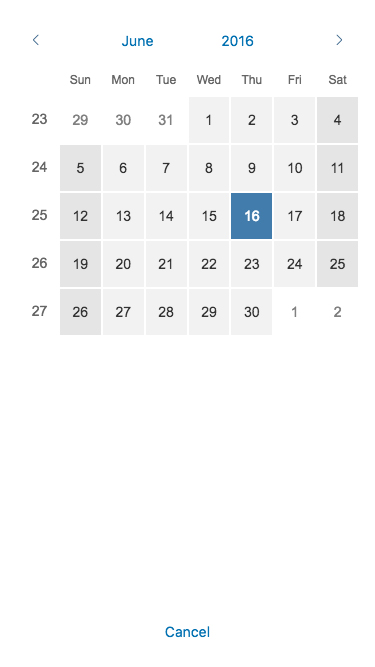
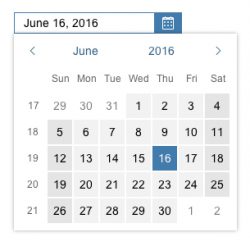
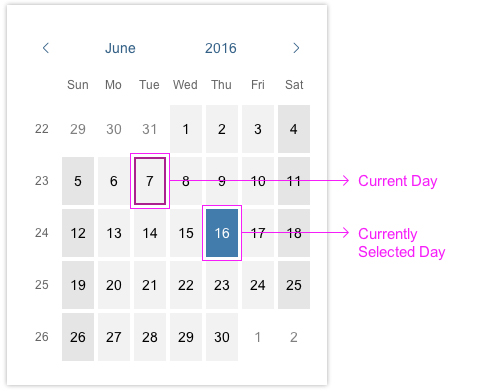
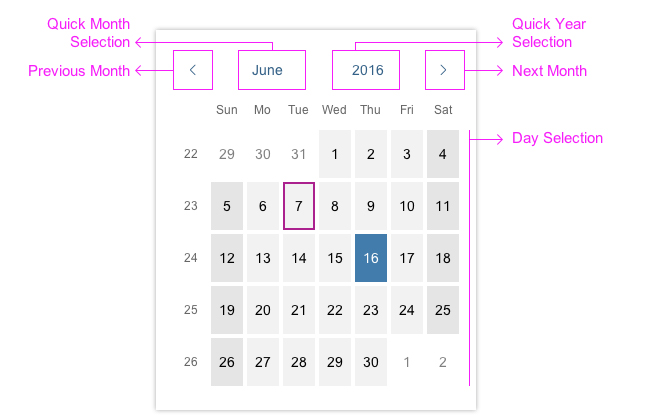
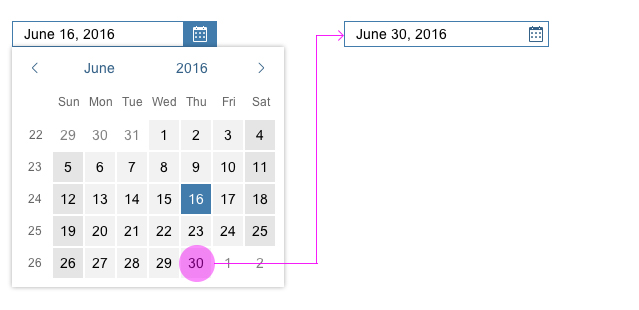
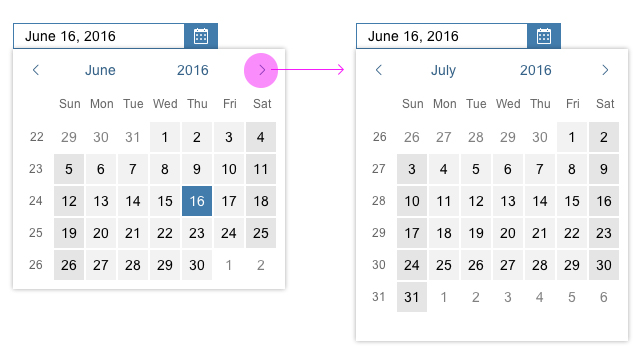
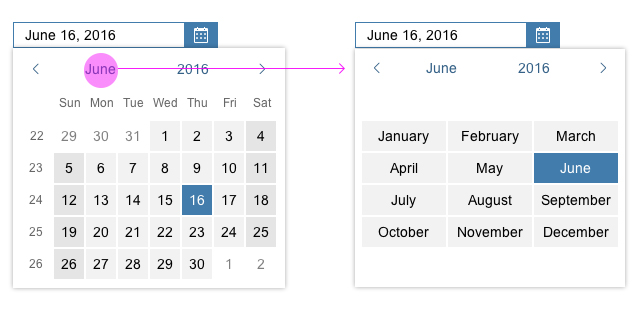
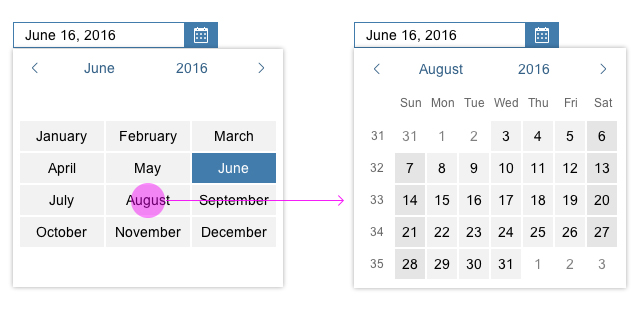
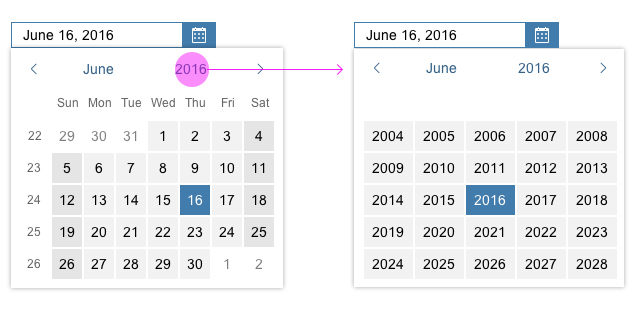
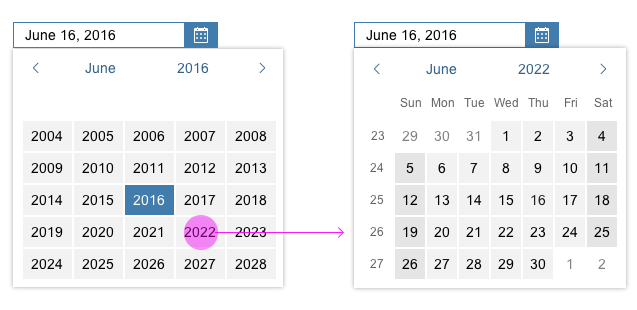
 Your feedback has been sent to the SAP Fiori design team.
Your feedback has been sent to the SAP Fiori design team.